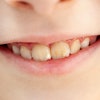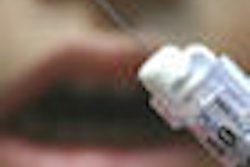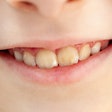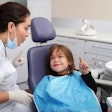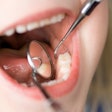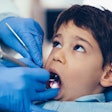A new study by researchers at the University of Maryland, Baltimore recommends a model program for urban pediatric clinics that can significantly reduce dental cavities in low socioeconomic infants and toddlers.
Researchers from the university's dental school conducted a 26-month study of 219 children, ages 6 to 27 months, at the university's Pediatric Ambulatory Care Center, a pediatric primary care clinic serving mostly low-income residents. Oral conditions of very young children were compared with those of older children at their first visit.
A "prevention group" of 109 children, ages 6 to 15 months, showed more than eight times less cavity-causing oral bacteria and significantly fewer cavities at their final dental visit than a control group of 110 children, ages 18 to 27 months, at their first visit who had not received previous preventive care. Each child in the younger group received assessments of dental caries, monitoring of oral bacteria levels, fluoride varnishing, dental health counseling, periodic recalls, and referral to a dentist.
The study showed that if infants and toddlers can be provided with some preventive care, their oral health will be much better at the age of 2 years old than if they did not receive preventive care, noted Glenn Minah, D.D.S., Ph.D., study leader and dental school professor, in a university press release.
Outcome measures included number of decayed tooth surfaces, oral counts of cavity-causing bacteria, and caregiver responses to a questionnaire about the child's diet and home care. Children who needed immediate treatment for caries were referred for treatment, and those with high microbial counts were considered high-risk and recalled for additional prevention.
The desired improvements in dental care for young urban children can happen "by working with the physicians to assess children for caries risk, screening them for early caries, referring them to dentists, and applying topical fluoride varnish," Dr. Minah said.
He said the success of the study came primarily from placing a full-time nurse or dentist with pediatric experience at the clinic who was solely dedicated to oral care, in addition to using microbial screenings as a primary caries-risk indicator for the study. The risk assessments and screenings helped the staff identify low-risk subjects and children who were experiencing caries-promoting conditions.
The study identified potential drawbacks of the model, such as added costs for laboratory equipment for analyzing the microbial screenings and recalling the young children for follow-up preventive measures. A more cost-efficient model suggested by the study may be one that assumes every enrolled child is at high risk for tooth decay, providing fluoride varnish at the first visit and at six-month intervals, referring each child for dental treatment when cavities appear, re-examining them for oral problems at each or most medical visits, and emphasizing dental education at each visit.
Copyright © 2009 DrBicuspid.com



